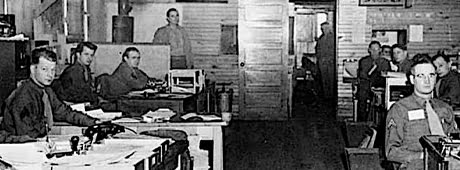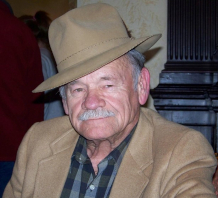No products in the cart.
Nazi Farmhands

POW Camps in Idaho
By John M. Larsen
My eyes bugged out in wonder and alarm. The German soldiers crouched low, their weapons flashing as they advanced slowly toward me across the field east of the house. I was right in their path as they determinedly came forward. This was not someplace in Europe but right next to Marsing. I was nine years old, and it wasn’t my imagination that the Germans were there. Armed American guards watched over them, but the German soldiers’ weapons were actually beet hoes—their enemy was now the weeds before them.
These men were among many German prisoners of war (POWs) sent around the USA during World War II, often to help farmers and ranchers when their crops needed tending or harvesting. In Marsing, only the headquarters building remains of what was their camp. Back in 2010, as I drove west on Highway 55 around the last curve before Marsing Bridge and looked straight ahead, I could still see the old Churruca Service Station, near the barracks used by the guards and a shed. Locals recall about a dozen wooden buildings there when the camp was in operation. I found no one who recalled why the camp was located in that spot, on property owned by Frank Churruca. To accommodate the prisoners, twenty-man tents were pitched in a fenced area of about ten acres, at the corners of which floodlights were mounted on poles near watchtowers.
After the war, most of the buildings were hauled away to farms or ranches. I doubt that any of those buildings still exist or if they do, they’ve been heavily remodeled. Homeless people used to hang out in the remaining buildings, several of which burned down because of careless fires.
The defeat of Rommel’s Africa Corps in late-1942 after the second Battle of El Alamein in Egypt netted a large number of POWs. Many of them were sent to the USA, because there were food shortages among Allied forces in Europe by 1943 and a lack of secure places for prisoners. There also was a shortage of farm workers in America after young men were called into military service. Marsing farmers told me that in 1942, Mexican nationals were brought into the area under a guest worker program and the following year, Jamaicans arrived to help harvest the crops. From 1944–1946, the start of school was delayed so we youngsters would be available to bring in the crops. We picked potatoes or topped sugar beets and threw them into the beet trucks.
This content is available for purchase. Please select from available options.
Purchase Only
Purchase Only

